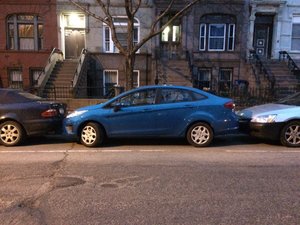I’m spending a few posts riffing on the relationship of memory and expertise, and what that can teach us about both the nature of expertise and its limits. If you find this stuff interesting and want to make sense of what it means for schooling and school redesign, check out my book with the brilliant Bror Saxberg, Breakthrough Leadership in the Digital Age.

At the most basic level, learning and expertise are the product of two linked processes. One relates to the memory and skills that we’re conscious of using. The second concerns the more deeply held knowledge that has long since passed into non-conscious, implicit fluency.
Cognitive psychologists describe the conscious, verbal, slower parts of our mind as our working memory. The faster, non-conscious part is our long-term memory. Our minds use both of these, together, to make decisions and learn. Expertise, then, is ultimately about using the limited-yet-flexible tool of working memory to deliberately practice decisions and skills in order to build long-term memory competence. Put simply, experts are people who have converted large chunks of critical, conscious mastery into their long-term memory.
As the conscious part of our minds, working memory is flexible—able to employ words, tackle new and difficult subjects, and solve complex problems. It’s also extremely limited. Like a computer with finite storage, working memory can’t have very many “windows” open at once and still run smoothly. This is why experienced ballplayers talk about the “game slowing down” and why seasoned musicians can jam with extraordinary fluidity; they’ve internalized so many key skills that they can execute complex tasks without having to think about them.
Now, unlike a computer, the number of windows a mind can handle at once is not etched in stone. For one thing, minds react to circumstances very differently depending on what they’re already familiar with (in other words, depending on what long-term memory can already process). An experienced driver, for instance, makes many complex decisions without even thinking about them. When a GPS directs you to turn left while driving, you don’t need your working memory to figure out which way to turn the steering wheel in order to go left. The conscious, working memory takes all this for granted.
Contrast this with many people’s encounters with parallel parking. Even experienced drivers may only rarely need to execute this joyous maneuver, which is quite different from “normal” driving. When parallel parking, you spend half your time going backwards, the navigation is about the back wheels more than the front wheels, and figuring out which way the steering wheel should turn is suddenly complicated, because it reverses depending on whether you are going forwards or backwards—and you are doing both in rapid succession.
So, it’s no wonder that many experienced drivers go silent as they parallel park, now unable to continue a conversation they could carry on cheerfully while reflexively cruising along a turnpike. Suddenly, their working memory is completely flooded with this task—they can’t hand it off to a fluent module in long-term memory. Think of an overloaded computer grinding away on a hugely complex calculation. They have to think through each step—trying to figure out (consciously and cautiously) which way to turn to get the rear wheels to do what they want.
Now, if you move to Brooklyn and drive every day, you’ll quickly find that fast parallel parking is a critical, oft-practiced life skill. In that environment, it’s a safe bet that you’ll soon enough become an insouciant and effective parallel parker. The repeated practice will fuel the creation of that long-term memory module, and you won’t even remember when you once had to think haltingly about each step.
This brings up an important, but easy to overlook, point: As with parallel parking, what is “one thing” to the trained mind can seem a wildly confusing sprawl of information to the novice. That’s why a tutor, a driving instructor, or a music teacher can think they’ve made things simple and straightforward—and the student can sit there feeling overwhelmed, befuddled, and unsure where to start.
Working memory can process just a few “chunks” at a time, but experts have internalized and welded together so many chunks that what seems like a single step to them can feel like a half-dozen to a non-expert. There’s a popular notion that we can consciously keep about seven “chunks” in mind at once, but that’s probably an overstatement. This is why things feel so much smoother and more manageable once we’ve absorbed modules into long-term memory; what might feel like a deluge of tasks to a novice feels very different to an expert.
The more expertise one builds in long-term memory, the more readily information can be processed, and the more working memory can handle. Think about the difference between how an expert race-car driver, debater, or video game player responds to the chaotic circumstances of competition compared to how much less adeptly a novice does. So how do we build up long-term memory? What does that mean for teaching, learning, and schooling? And what does all this mean about the strengths and frailties of “expertise”? These are our questions for the next week or two.
– Frederick Hess
Frederick Hess is director of education policy studies at AEI and an executive editor at Education Next. This first appeared on Rick Hess Straight Up.
The first blog enry in this series can be found here.


